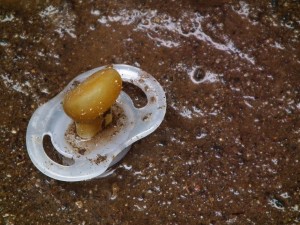Italian architect Carlo Ratti, Director of the MIT SENSEable Cities Lab, presents an entertaining Ted Talk “Architecture that senses and responds” on the use of sensors in buildings to monitor occupant behavior and environmental conditions for input to the management of the buildings and other human-made systems. Once we know the critical environmental variables that …
Indoor Air and Climate Change URL: http://www.epa.gov/ncer/rfa/2014/2014_star_indoor_air.html Open Date: 10/23/2013 – Close Date: 01/23/2014 Here are some of the important details: Summary: EPA announces an extramural funding competition designed to support research that improves understanding of how climate change affects human health through indoor air quality as adapted by building designs and uses. Proposals should …
In the United States, floods are the most common natural disaster (NFIP, 2013). Climate change is predicted to increase the frequency of precipitation extremes in the Northern Hemisphere, leading to increased flood risks (Min et al., 2011; Pall et al., 2011). Studies suggest both general flooding and extreme flood events will become increasingly frequent as …
Building Information Research Knowldgebase – BRIK is a useful site for all kinds of architecture-oriented research. Here’s a link to the database of built environment research hosted by AIA with NIBS: http://www.brikbase.org/. Self-described as “your information portal to professionally reviewed research in the built environment for professionals by professionals” Here is an example of a …
Just a quick post here to point people to a resource we just recently became aware of called the “Building Information Knowledgebase (BRIKbase)”. From their “About” page: A collaborative effort of the American Institute of Architects and the National Institute of Building Sciences, the Building Research Information Knowledgebase (BRIK) is an interactive portal offering online …
Sloan Symposium at Indoor Air 2014 The Alfred P. Sloan Foundation Program on Microbiology of the Built Environment has awarded a grant to Indoor Air 2014, the 13th International Conference on Indoor Air Quality and Climate, to be held in Hong Kong from July 7-12, 2014. Paraphrasing a quote on the conference web site from …
Does heavy drinking affect the bacteria in your living room air? I don’t know, but some work I saw at ASM suggests that it might. At the poster session on Day 3, Valdis Krumins from Rutgers had a poster reporting efforts to understand the effect on airborne bacterial concentrations (or, at least, their ribosomal 16S …
Just kidding; I paid to get in, but this conference is not intended for a research architect/building scientist like me. This was my third ASM meeting, and now I know something approaching 1% of the jargon, so I was able to “mine” the sessions, especially the posters, for built-environment-relevant content. Under the surface of the …
The Alfred P. Sloan Foundation has created a new funding opportunity in its Microbiology of the Built Environment (MoBE) program. The Foundation seeks to further the development of talented early stage Ph.D. scientists and engineers by establishing the Microbiology of the Built Environment (MoBE) Postdoctoral Fellowship program. The program will provide support for postdoctoral researchers …
After some off-line dialogue related to my “Should you lick your baby’s dropped pacifier?” blog post, I have decided to post a separate comment regarding the hygiene hypothesis, mentioned in the introduction, and the plasticizer hypothesis, emphasized by some off-line correspondents. What is clear is that in the modern, human-occupied indoor environment, there are microbes …

